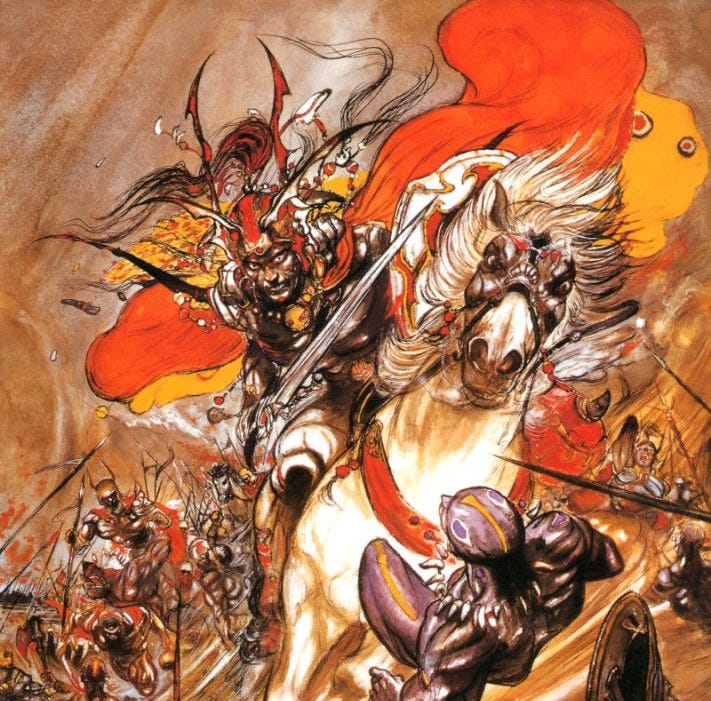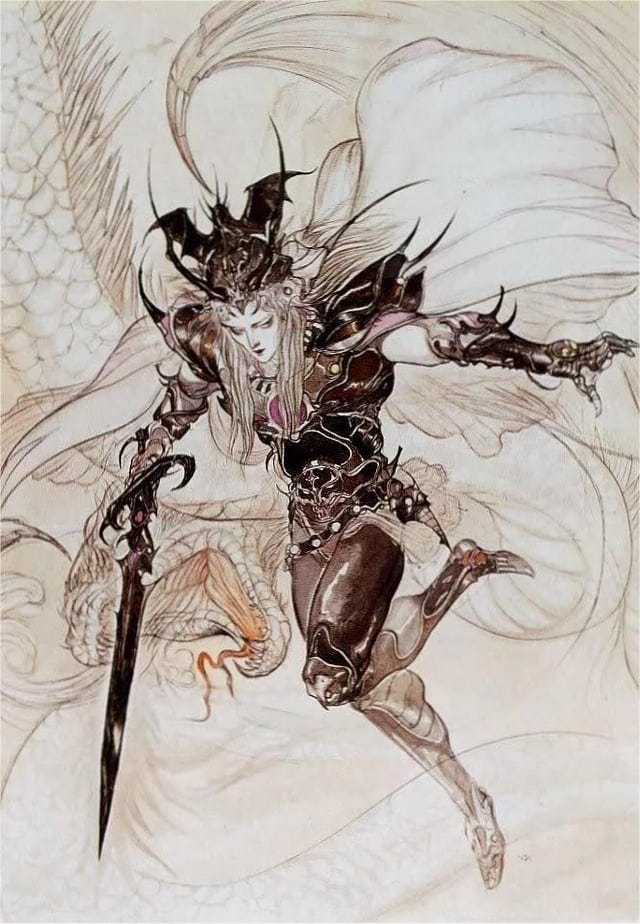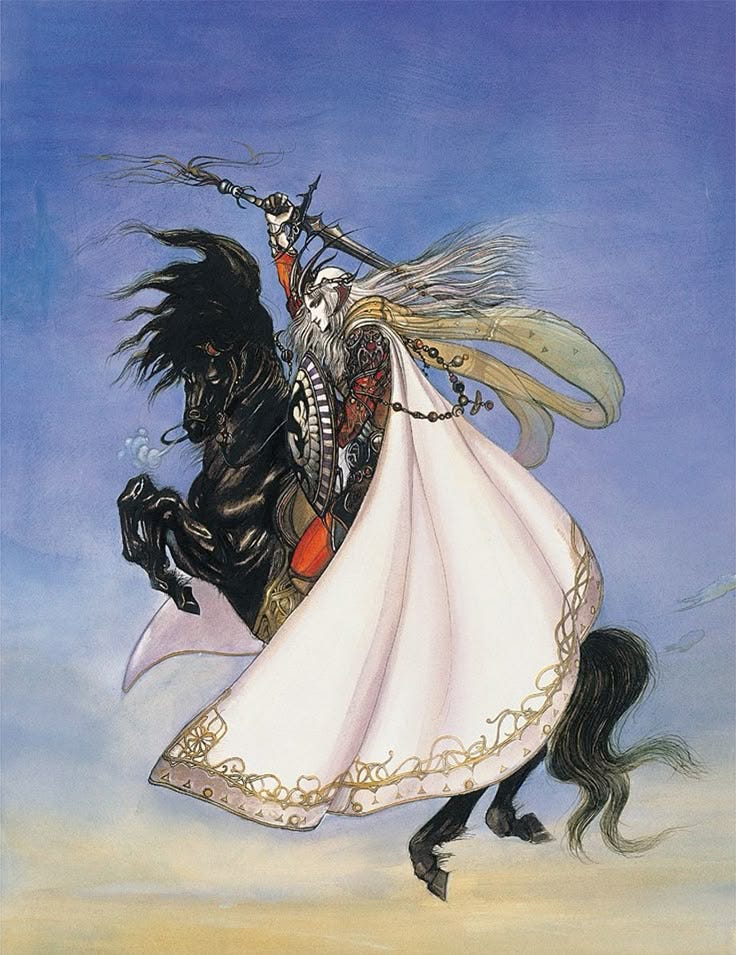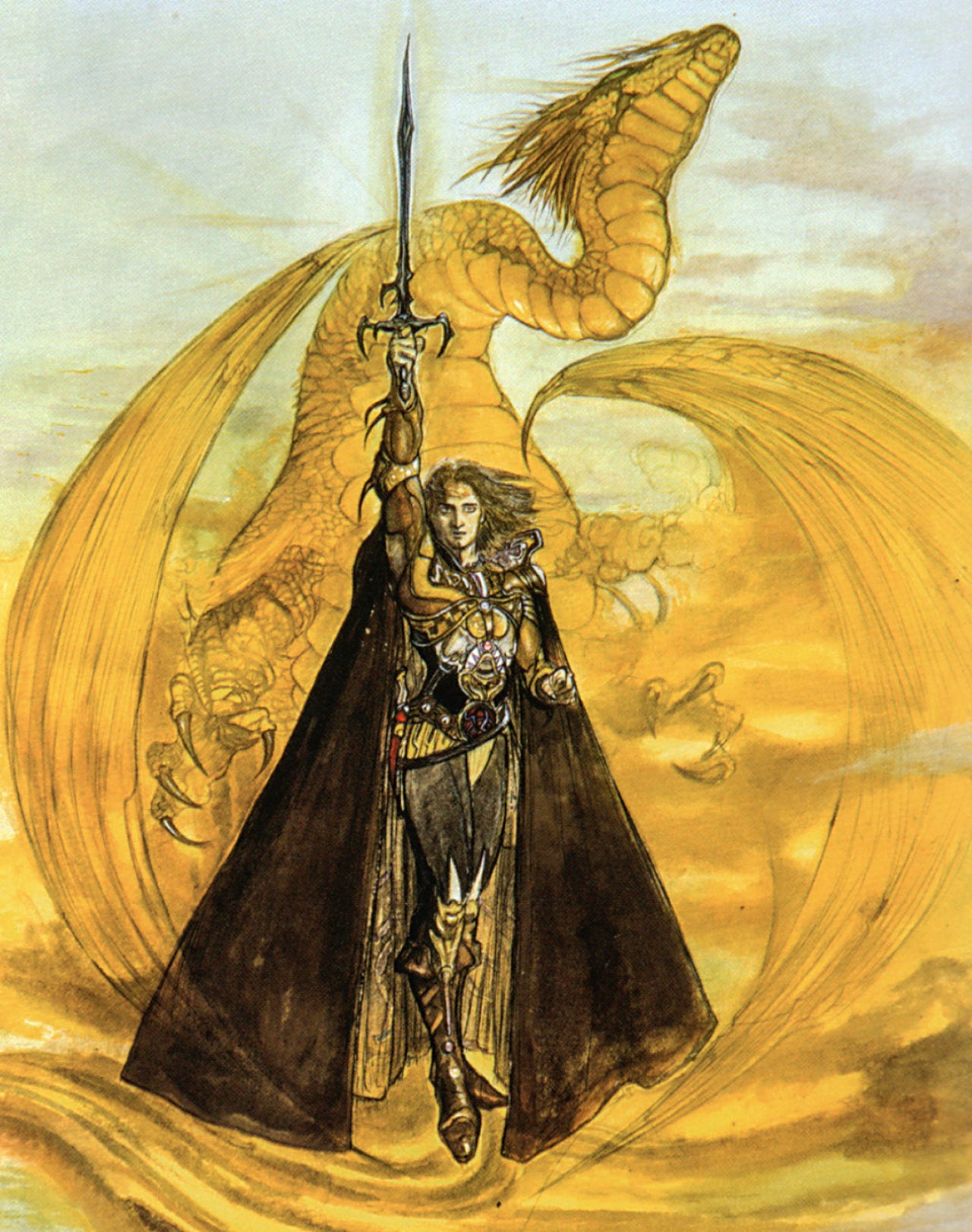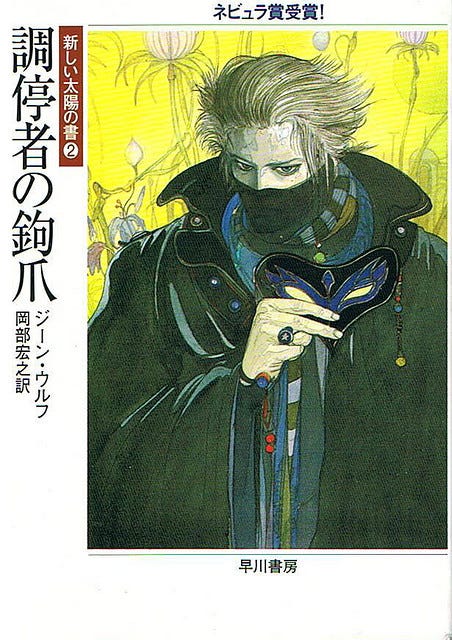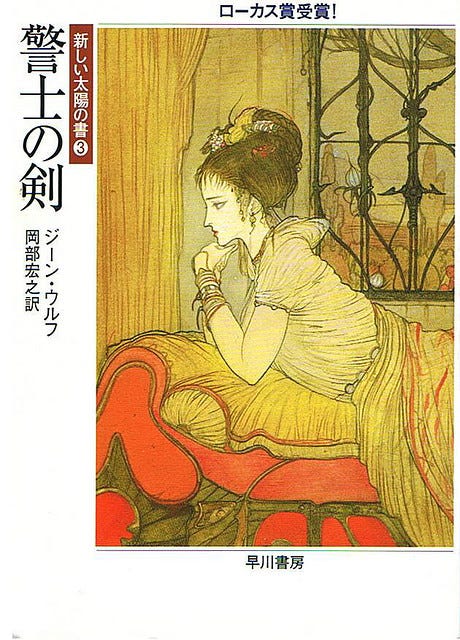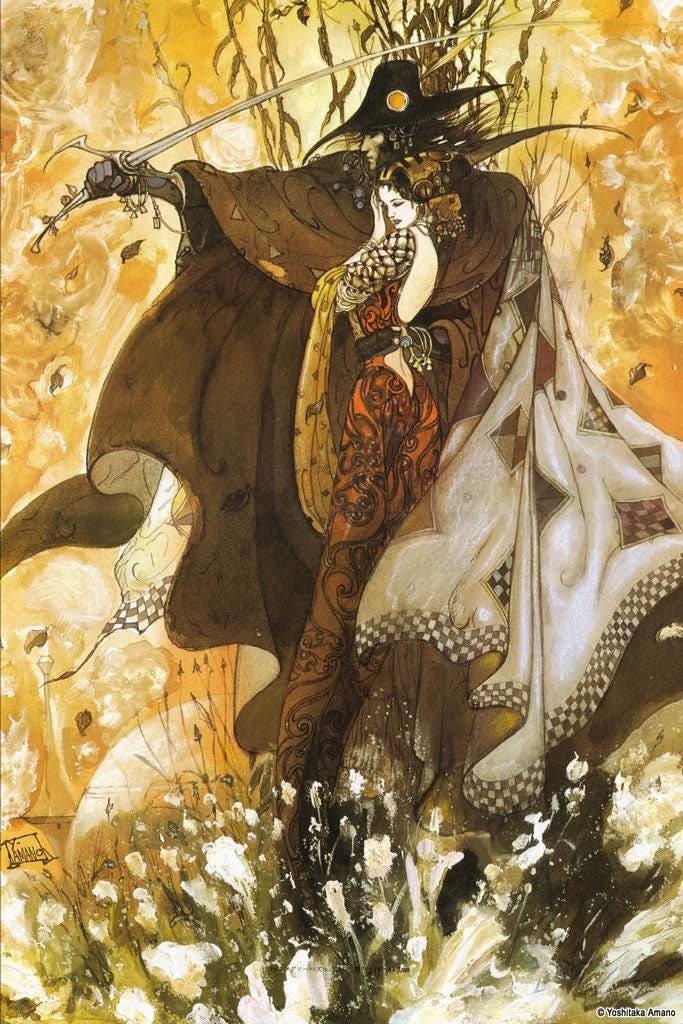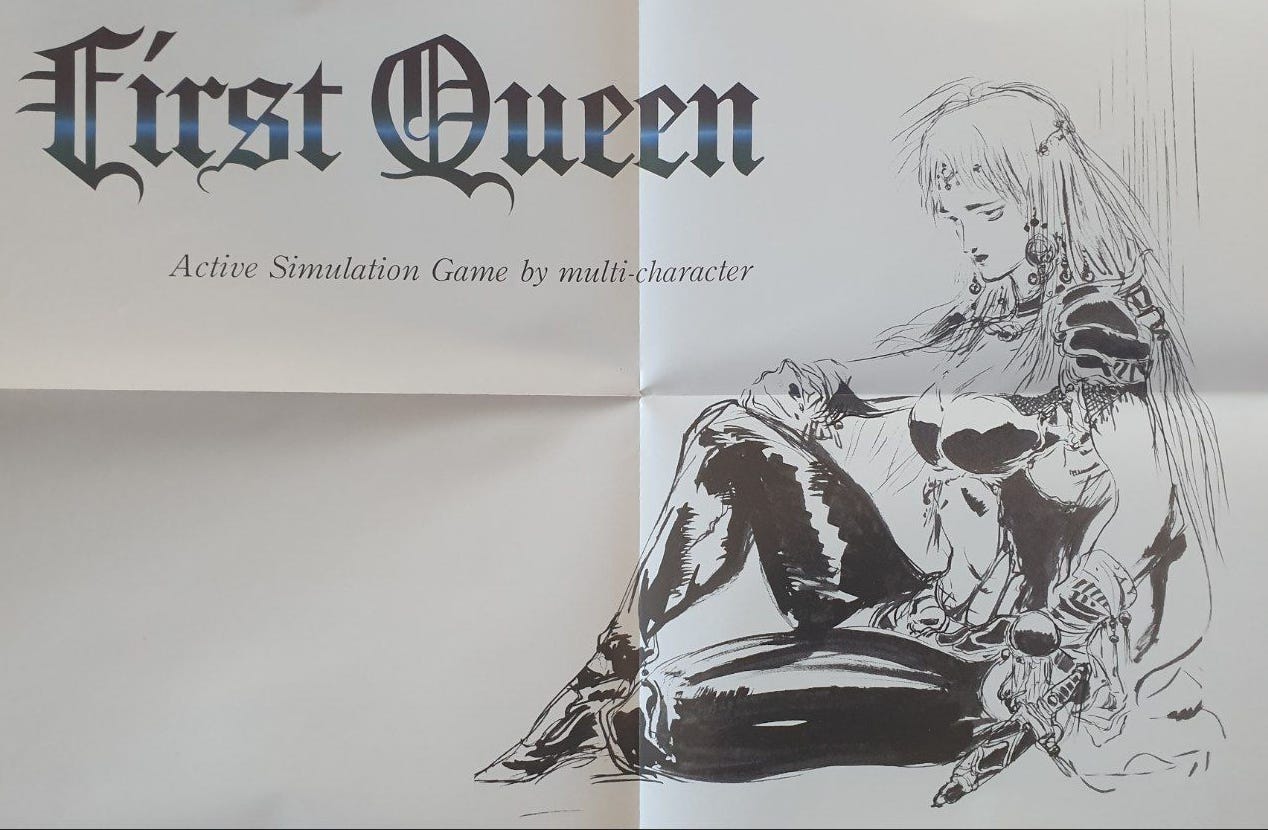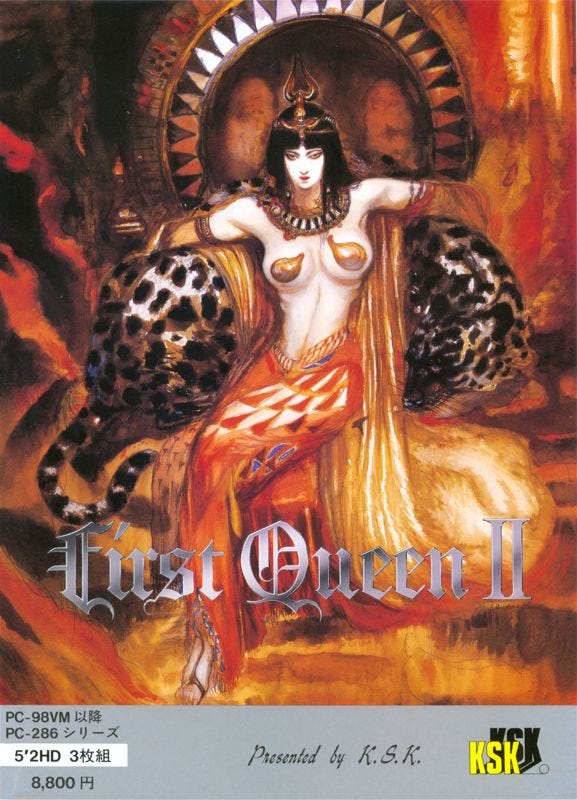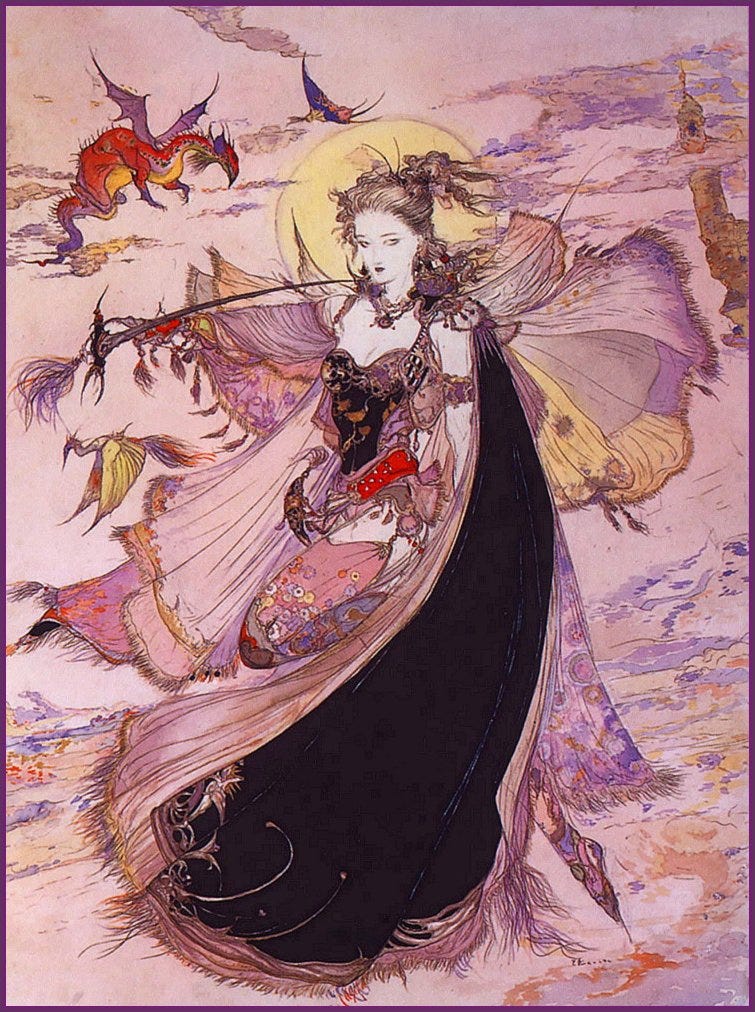The overlooked art of Yoshitaka Amano - Part I: Elric of Melniboné, Sword World and Kure Software's experiments
While discussing Japanese artists active in the JRPG scene since the late ‘80s and early ‘90s, veterans like Hitoshi Yoneda, Nobuteru Yuuki, Noriyoshi Ohrai, Jun Suemi, Satoshi Urushihara or Akihiro Yamada, one can’t escape the lingering shadow of industry giant Yoshitaka Amano, which was, and still is, by far the most popular and successful illustrator of his generation both among Japanese and Western fans, despite competing with a number of incredibly talented masters.
While Amano has had a long and extremely diverse career branching off in a variety of unrelated contexts, from his days as a Tatsunoko animator in the ‘70s to his surrealistic and fashion-inspired pieces, most people outside Japan got to know Amano for his work on Squaresoft’s, and later Square Enix’s, Final Fantasy franchise, which is by far his most important videogame-related partnership and, I feel, something that has been discussed so many times over the decades that covering it yet another time would risk being redundant.
Then again, there’s another, oft-forgotten Yoshitaka Amano, the one who also worked on a number of fantasy novel covers who influenced his videogame-related output (including a number of Japanese editions of Western classics) and lesser known JRPG projects since the early days of Japanese home PCs, with his last non-Square Enix niche partership being Arc of the Alchemist in 2019. This, I feel, is a side of his works that deserves more coverage, even more so since among those illustrations there are some which are barely credited to him (like with Kure Software’s Duel, where his involvement isn’t mentioned anywhere in English sources as far as I’ve seen, at least until now), while others can be used to spotlight little-known series and titles.
Without further ado, let’s look at some of his non-Final Fantasy collaborations, some of which only covered box arts or concept illustrations, while others actually included in-game art direction and character portraits.
-ELRIC AND THE NEW SUN
Before dwelling into Amano’s overlooked videogame-related art, though, it would be a shame to ignore yet another lesser know part of his corpus, the awesome illustrations he created for the Japanese edition of a number of Western fantasy novel classics, a trend that saw a number of talented Japanese artists of the time tackle American and European novels which already had an established Western sword and sorcery art direction.
Some of those works likely influenced his own art, with Michael Moorcock’s Elric, the tragic albino Emperor of Melniboné, providing a figure that fits remarkably well with Amano’s own androgynous, ethereal and yet dynamic style. His work on the Elric Saga, starting around 1984, saw him creating a number of incredible book covers and illustrations that form an important part of that series’ already iconic art heritage, also showing some early trends that will resurface in his more famous fantasy outings some years later.
Moorcock himself, an incredibly influential sword and sorcery British author who, with his many works, helped to popularize a number of concepts in fantasy literature, like the multiverse or the conflict between Law and Chaos, was so moved by Amano’s illustrations for the covers of his books’ Japanese editions that he ended up celebrating them a number of times, including with a short piece he wrote in 2006, highlighting the importance of traditional Japanese art for as a source of inspiration for both Western artists and writers and how Amano’s pieces, despite being based on his work, ended up stimulating his fantasy in new directions which, considering Moorcock’s own talent and wild imagination, is definitely noteworthy. This admiration is also the reason Amano’s art was also used for one of the Western anthologic prints of Moorcock’s corpus, a chance almost no Japanese illustrators had outside of their own country.
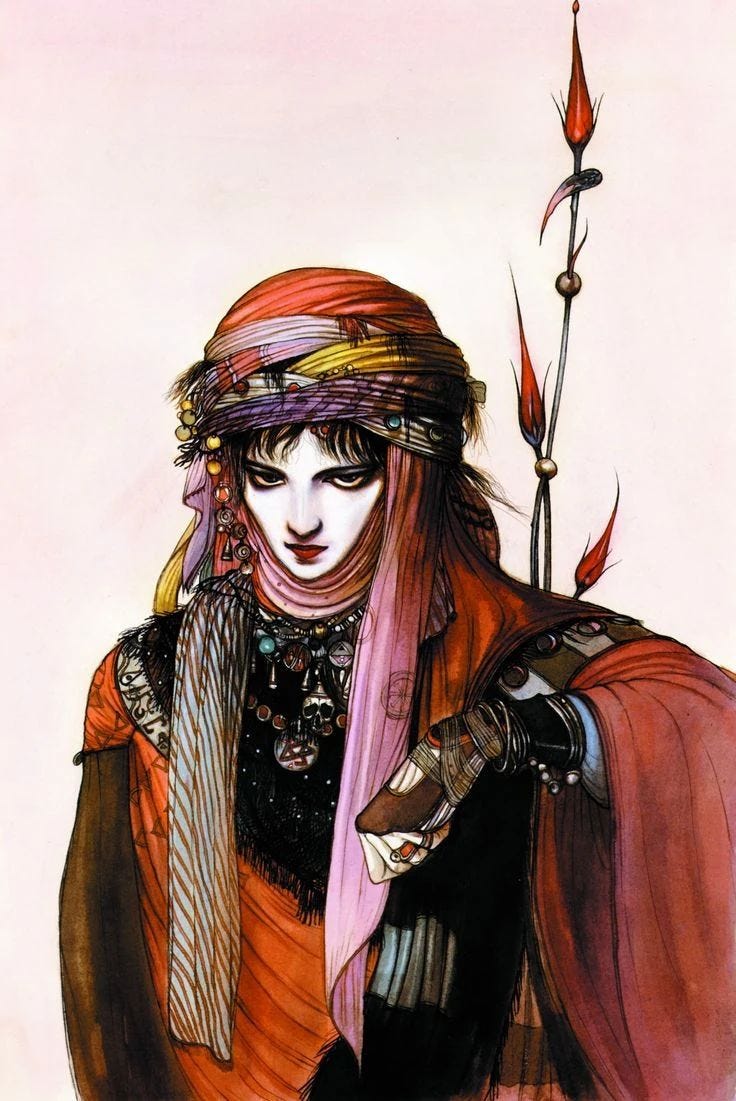

Aside from Moorcock’s works, Amano also had a chance to work on the covers of the Japanese edition of another great fantasy cycle of that age, Gene Wolfe’s The Book of the New Sun tetralogy, whose setting and overall tone is also highly compatible with his art style.
As for Japanese novels, Amano ended up illustrating a number of them over his career, but one can’t ignore the long-standing partnership he had since 1983 with the science-fantasy Vampire Hunter D series by Hideyuki Kikuchi. Those novels also ended up being adapted two times in anime form, including the incredible 2002 Bloodlust OVA by Studio Madhouse, which ended up being one of the best anime adaptation of Amano’s character design alongside 1985’s Tenshi no Tamago.
Amano, same as practically every single Japanese fantasy illustrator in the early ‘90s, also worked with Ryo Mizuno, who wasn’t just the writer of the Record of Lodoss War novel series and the creator of the Forcelia setting, but also one of the driving forces behind Group SNE, the biggest Japanese tabletop RPG publishing house, whose main product was the D&D-inspired Sword World system, whose rulebook Amano ended up illustrating in 1989.
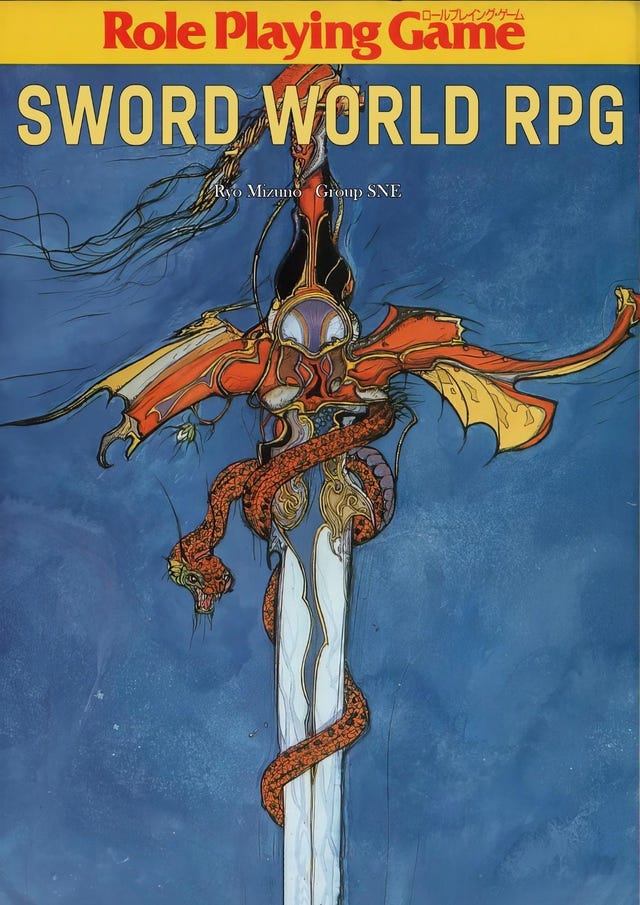
-DUELING WITH THE FIRST QUEEN
After this brief novel and tabletop RPG-related introduction, our attempt to tackle Amano’s lesser known JRPG works starts with a company few nowadays are likely to know. Despite being a team active from the mid ‘80s up until today, Kure Software Koubou is a name most Western (and, I reckon, Japanese) JRPG fans have never had a chance to hear, being a developer mostly active in the days of Japanese home PCs, with a number of incredibly niche console ports and a fairly recent PC remake of their very first game, almost none of which ended up being localized.
Even then, this little company and its founder, Eiji Kure, were actually among the pioneers of the tactical JRPG space, with their Silver Ghost real-time tactical RPG (1988) being credited as one of the main inspiration behind Shining Force by Camelot’s Hiroyuki Takahashi. Right after releasing Silver Ghost, Eiji Kure perfected his unique blend of action and real-time tactical JRPG combat, which he dubbed gochya kyara, or multi-character, by kicking off a new franchise, First Queen, which will become Kure’s most successful endeavor.
Knowing a great cover could make all the difference for the commercial success of a niche RPG, as was the case with Akihiro Yamada’s Black Rainbow box art, Eiji Kure thought he needed a bit more oomph to get First Queen noticed in the crowded shelves of the competitive home PC market of those days, which saw a veritable avalanche of JRPG releases which are nowadays sadly forgotten by most, and choose to contact Yoshitaka Amano, which by then was already a well-known figure in a variety of contexts ranging from animation, fine arts and novel covers and illustrations, with a rather intimidating four-years winning streak of the Seiun Awards’s best artist title from 1983 until 1986, which also likely kickstarted his first work in the videogame space just one year before First Queen’s 1988 release, with Squaresoft’s first Final Fantasy (1987).
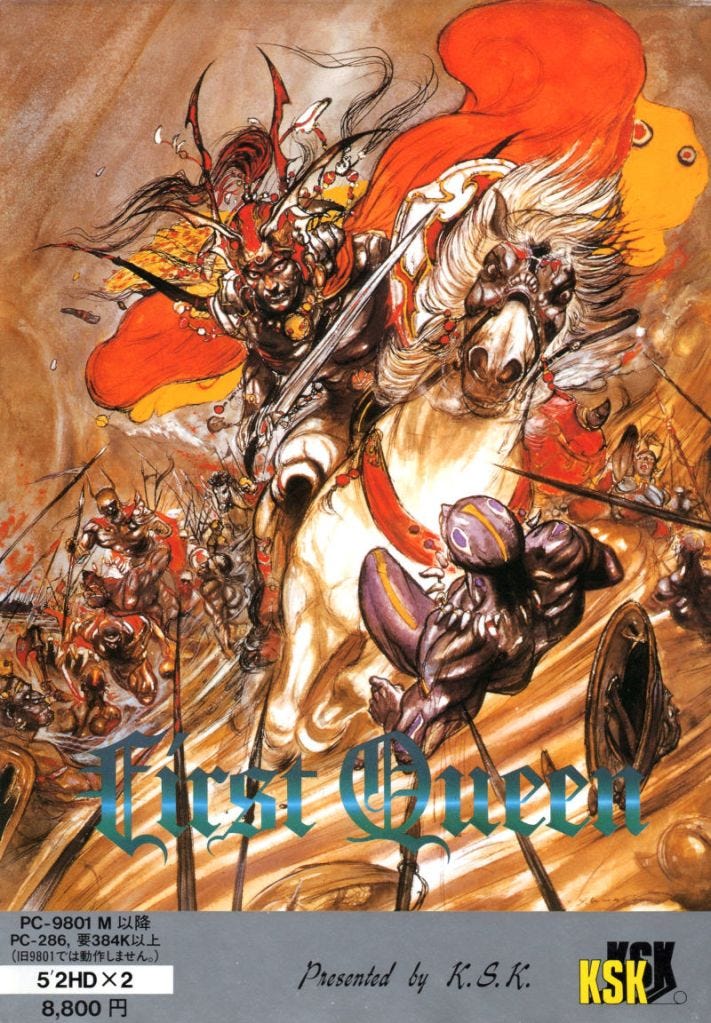
Kure had Amano illustrate not just the game’s box art, which is still positively gorgeous, but also First Queen’s manual, with one of his black and white sketches also being used for a poster sporting the official English translation Kure choose for his new combat system, “active simulation game by multi character”.
Amano ended up working on First Queen up to its third entry, before Jun Suemi, another incredibly talented Japanese RPG-focused artist which I recently wrote about, took over box art duty with First Queen IV, something that, as we will see, will happen again later on with Front Mission, when Suemi was contracted to work on Front Mission 2, again following in Amano’s footsteps. Interestingly, Kure Soft choose a completely different art style for First Queen’s Super Famicom remake, Ornic Senki, going with a more realistic style reminiscent of D&D-era Western sword and sorcery, even if that difference could actually be due to the involvement of Culture Brain, the company that Eiji Kure hired to develop that version, and its own in-house artists.
Then again, it isn’t like Eiji Kure never tried going with a more realistic, Western-inspired art direction, considering his own Early Kingdom is one of the main examples of that kind of visual style among home PC JRPGs.
Aside from the First Queen franchise, Amano and Kure Soft Koubou had yet another partnership, tactical JRPG Duel on NEC’s PC88, which is a bit like Amano’s lost videogame opus, so to speak, since its cover doesn’t seem to be credited to him anywhere on the English web.
While Duel never managed to become a franchise, it was still successful enough to warrant a lightning-fast updated port on NEC’s PC98, redubbed Duel 98. Interestingly, this is also the first JRPG incorporating in its title the name of its hardware, a bit like what happened later with Ogre Battle 64.
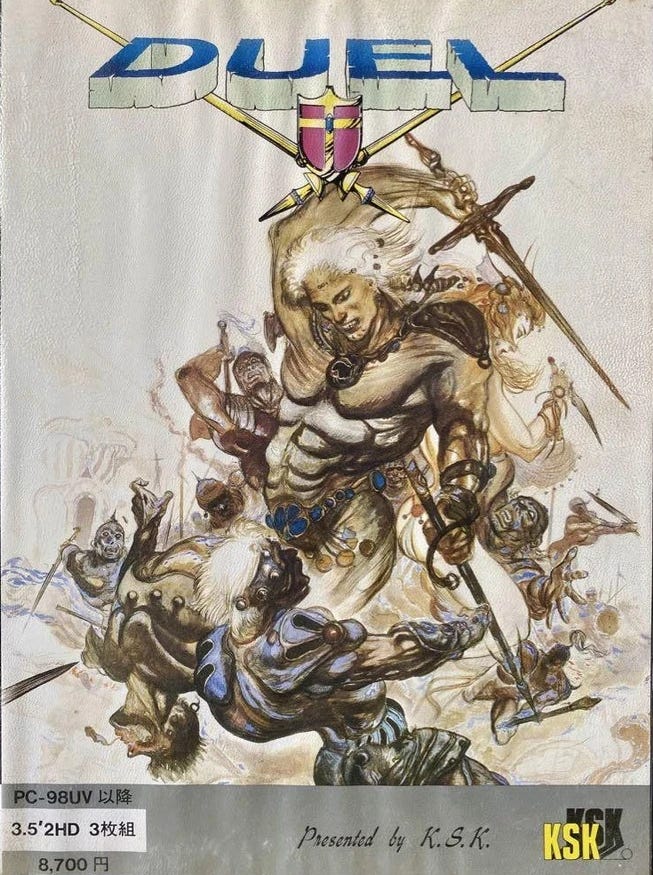
After looking at Amano’s remarkable work for Kure Software, the next part of this piece will focus on a number of other JRPG-related partnerships he had later on, ranging from the little known Ys cover he did for that game’s X68000 remake, his work for Squaresoft’s Front Mission series, his Atlus collaboration for the peculiar card-based tactical JRPG Rebus, better known as Legend of Kartia, not to mention the unique El Dorado Gate episodic franchise and his later work for Compile Heart’s titles.




